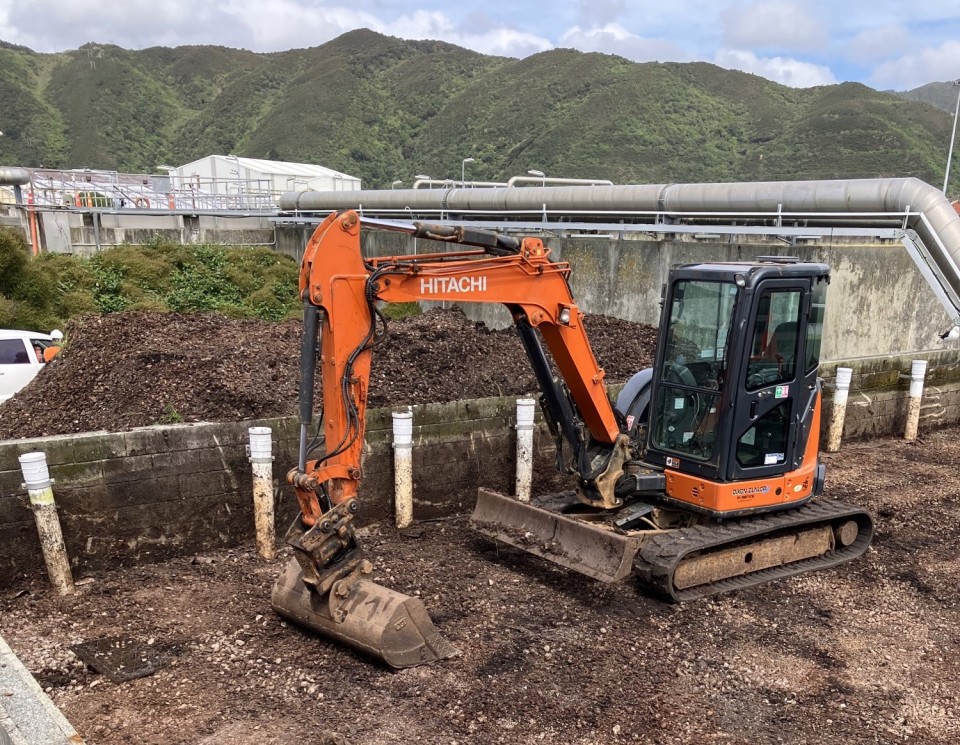Seaview Wastewater Treatment Plant Upgrades
We’re upgrading the Seaview Wastewater Treatment Plant on behalf of Hutt City Council and Upper Hutt City Council to reduce odour and discharges of untreated or partially treated wastewater and future-proof the plant, starting with odour improvement.
If you have any questions about this work, please contact:
Wellington Water, 04 912 4400
Latest Updates
Thank you to everyone who recently attended the public tour of the Seaview plant.
We are inviting the community to a tour of the Seaview plant on Saturday, June 22.
Thank you to everyone who attended the recent Seaview Treatment Plant community liaison group (CLG). The minutes and a summary of this meeting are now available.
The first step in improving odour treatment - replacing the biofilter media - was undertaken in December 2023. Find out more in the Updates section.
In 2024, there will be a project of work across the pIant to improve the capture of odours to avoid offensive and objectionable odour beyond the plant boundary.
Further upgrade projects are in the planning stages. This page will be updated as details are confirmed.
The Seaview Wastewater Treatment Plant is aging. Much of the plant’s equipment and parts are nearing the end of their service life, which means it is more prone to service interruptions and needs more maintenance. Find more information about the plant’s performance and resource consents here
A multi-million-dollar programme of work is planned over the next six to 10 years to renew and upgrade equipment at the plant to improve its operation, subject to funding being confirmed. The current plan includes:
- Odour treatment renewal project (2024-2026)
- Sludge dryer replacement (2024 - 2028)
- Ultra-violet (UV) disinfection equipment renewal (2024 - 2026)
- Sludge pumps, aeration control system and aeration blowers (2024 - 2028)
- Clarifier ( 2026- 2028)
This work will contribute to reducing odour and discharges of untreated or partially treated wastewater, increasing capacity to handle population growth, and improving efficiency.
There is no quick fix, but Wellington Water is committed to short- and medium-term interventions to effectively manage operations of the treatment plant.
More detail on each area will be provided as planning progresses. Wellington Water is also considering options for reducing overflows to the Waiwhetū Stream and replacing the Main Outfall Pipeline.
FAQs
Is the plant meeting resource consent standards?
We are working hard to improve the current performance of the plant and the way we operate. Our focus is to meet the required standards and be compliant with the resource consents. The plant is aging, much of the equipment and parts are nearing the end of their service life, which means the plant is more prone to service interruptions and needs more maintenance.
Why are there no covers on the aeration or clarifier tanks at the Seaview plant?
Seaview’s aeration tanks do not pose a significant odour risk when they are operating according to design, as we are actively blowing air into a mixture of suspended aerobic microorganisms. The clarifier tanks which follow the aeration tanks also have a low odour risk. In the event of a breakdown in upstream treatment processes or a power failure, odour from the aeration tanks is possible. This risk is better addressed by ensuring we have effective equipment and systems, than by covering the tank. It is not common practice to cover tanks here or overseas, and not practicable at Seaview given the plant’s design.
Why are the treatment plants at Hastings, Gisborne and Napier totally covered?
Those plants use a different treatment technology and are constructed differently to the Seaview plant. It’s a bit like comparing diesel with petrol systems. The Hastings, Gisborne and Napier plants use trickling filter tanks and spray the wastewater over an open tank filled with algae that grows on plastic media. This does not happen at Seaview.
Why didn’t you replace the biofilter plenum (air distribution system) in December, when replacing the biofilter media??
During the works in December 2023 and following a condition inspection, it was discovered that the ‘plenum’ [biofilter structure] had degraded and should be replaced. It was necessary to proceed with the biofilter media replacement, as undertaking this additional work would delay the immediate objective of improving odour levels. Inspection of the plenum was only possible after we started removing the old biofilter media.
It was in the media that the work to replace the biofilter should have started in 2021, why the delay?
The biofilter media replacement was never programmed to be replaced in 2021. This work started in November 2023 after condition assessment and lab testing of bark composition, and the availability of a specialist contractor. The replacement was completed ahead of schedule in December 2023.
Is the biofilter media replacement making a difference?
While the new biofilter media is establishing well, there are ongoing issues with odour levels. Replacement of the biofilter media is only one part of the solution. We are continuing independent odour scouting, as well as monitoring complaints from the public, as we continue to work on other issues contributing to odour.
What upgrades do you have planned, how much will it cost?
We are prioritising improvements in three key areas we know are causing significant odour issues: the biofilter system, the milliscreening building and the sludge drying building. Hutt City Council has budgeted $13 million for these works.
Is the odour issue ever going to be fixed?
Wellington Water and Hutt City Council are committed to resolving the issue, though this is not an overnight fix, and it will take time. We acknowledge this is concerning, frustrating, and upsetting for everyone given it has been a long-term issue that has got worse in recent years.
Are there any health implications with plant associated odour?
When odour levels are strong and unpleasant, it can make some people feel ill. We are not aware of any health implications (bacteria that can be inhaled) and are following standard health and safety guidelines with the maintenance works we are doing at the treatment plant.
Te Whatu Ora - Health New Zealand has done an assessment on the use of the deodoriser at the Seaview Wastewater Treatment Plant. Please find the statement and more information here
Given the projected long-term investment, is the plant's current design under review?
We have concluded the design of the plant remains appropriate but much of the equipment needs renewing and upgrading, because the plant is aging, and equipment has deteriorated more quickly than expected.
We have also considered projected population growth and the standards we are required to meet by current resource consents.
The odour treatment renewal project is the first workstream in this long-term plan, followed by the sludge dryer replacement. There are other proposed upgrades for the UV system, sludge pumps, aeration control and clarifier. In addition, there is ongoing planned maintenance such as the milliscreen replacement, and reactive renewals (replacing smaller items that fail).
There is no quick fix, but Wellington Water is committed to upgrading the plant so we can continue to protect the health of people and the environment, while catering for population growth.
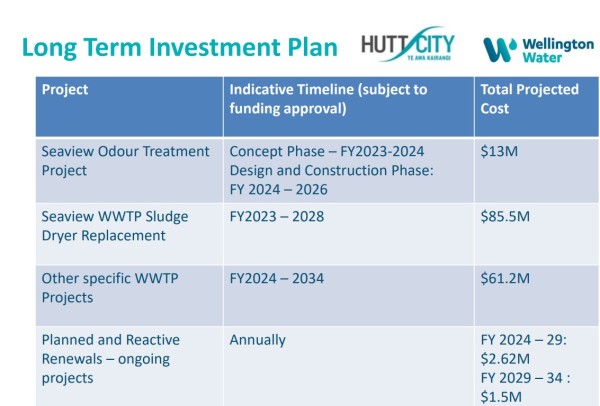
What odour neutraliser spray is used at the plant?
Odour Neutraliser Plus (SCD 1100)
For more information about the odour control product being used at the Seaview Wastewater Treatment Plant > Odour Neutraliser Plus Assessment
We’re investing $13 million in work to improve systems to capture and remove odours at the Seaview Wastewater Treatment Plant to avoid odours reaching the community. The first of these equipment upgrades is scheduled to get underway this winter.
If you want to be on the mailing list for updates, please email customer.notifications@wellingtonwater.co.nz
About the odour treatment renewal project
The objective of the odour treatment renewal project is to improve the management of odour to ensure the plant is a safe environment and is operating within its resource consent.
We’re aware odour continues to be a problem, based on community feedback and our own independent scouting.
In the short term, we are prioritising areas for action that will result in capturing more odourous air from the milliscreening process and ensuring that the biofilter system is working effectively to remove odours from this air.
In the medium term, we are assessing options to improve odour management from the sludge dryer area, noting the dryer is due for replacement.
As well as replacing equipment, we’ll continue with maintenance and operational activity that we expect to contribute to reducing odour.
Treating odour
The Seaview Wastewater Treatment Plant uses physical and biological processes that harness the action of bacteria and other microorganisms to clean the wastewater. One of the side-effects of this process can be odour. The plant is designed to treat odours.
Odourous air is pumped to the biofilter, where is passes through a bed of media (mainly bark, gravel and limestone chip) containing microbes that break down the odour-causing compounds.
The Seaview plant also uses an odour neutraliser, which sprays a safe chemical mix into the air to neutralise odours.
Priority work
1: Improving the biofilter
When the biofilter media was replaced in December 2023, a comprehensive mechanical and structural condition assessment was undertaken. It became evident that:
- The air distribution system (plenum) in all six biofilter cells needs replacing.
- The biofilter cell isolation system needs redesign and upgrading to isolate each of the six cells individually, this would avoid odour discharge to the environment during routine maintenance events.
This work is scheduled to get underway this winter. While this work is underway there may be some odours detected. The community will be kept fully informed about when there may be a higher risk of odour.
2: Capturing odours from the milliscreens
The wastewater screening room houses 10 inlet screens. These remove large solids from wastewater as it enters the plant. Find out more about the process here. This is typically the most odourous part of any wastewater treatment facility. The screens and channels are covered, with multiple ducts connected to the odour extraction system. This allows odourous air to be extracted with a fan and sent to the biofilter for treatment.
We know that there is an issue with the ducting from the milliscreens which is allowing odour to escape from the equipment into the building and then to outside. These ducts will be replaced to restore capacity.
We also plan to replace the fans that help extract odour around the plant.
3: Capturing and treating building air
While ducts capture air from the covered screens and channels, other air in the wastewater screening room vents directly to outside. We will upgrade the ventilation system to capture the building air for treatment before it is released. This is likely to involve installing new carbon air scrubbers in this building, subject to detailed design and planning being completed.
We are also looking at options for improving management of air from the sludge dryer building.
4: Repair External ducting
We know that some of the odour ducts running outside the buildings (external ducts) have leaks. This means that some of the captured odour escapes, and it also reduces the effectiveness of the fans in drawing out the odour from the different process areas. We have completed condition assessments on the external ducting and are planning how to repair leaks.
5: Process monitoring
Better monitoring of air flows will be built into all the above packages.
Phase 2
The second phase includes two work packages; sludge dryer air treatment and further external ducting, as required. Both of these would require an assessment of the effectiveness of the first phase in reducing odour issues. The sludge dryer air treatment also needs to be considered alongside plans to replace the sludge dryer.
Timeline
Physical work on the biofilter structure (plenum) will start mid-winter 2024. The community will be kept up to date about the timetable. Timing for other work is being confirmed and updates will be provided.
Seaview Wastewater Treatment Plant Newsletter June 30, 2024
Your latest news on what's happening at the Seaview Wastewater Treatment Plant
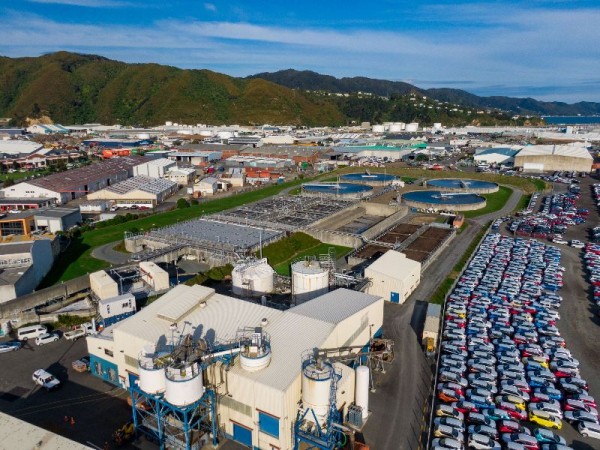
|
|
|
|
|
|
|
|
|
|
|
|
 |
|
|
|
 |
|
|
Get in touch RSVP for the odour treatment renewal project update, at community@wellingtonwater.co.nz Join the mailing list for plant notifications and this monthly update, at customer.notifications@wellingtonwater.co.nz If you have any questions relating to this newsletter, at community@wellingtonwater.co.nz For complaints relating to specific incidents or properties go to customer@wellingtonwater.co.nz Thank you for taking the time to read this information.
Linda Fairbrother Blair Johnson Project Lead, Major Projects Head of Wastewater Contracts
|
Seaview Wastewater Treatment Plant Newsletter - May 2024
Seaview Wastewater Treatment Plant Newsletter May 31, 2024
Your latest news on what's happening at the Seaview Wastewater Treatment Plant

|
|
|
|
|
|
|
|
|
|
 |
|
|
|
 |
|
|
|
|
Seaview Wastewater Treatment Plant Newsletter - April 2024
Seaview Wastewater Treatment Plant Newsletter April 2024
Your latest news on what's happening at the Seaview Wastewater Treatment Plant

Kia ora koutou,
Welcome to the second of our regular monthly updates about Wellington Water’s operation of the Seaview Wastewater Treatment Plant and the programme of upgrade work.
You are receiving this email because you have expressed an interest in the plant. Please feel free to share this with others who may be interested. You can join the mailing list by emailing customer.notifications@wellingtonwater.co.nz
We would like to offer a tour of the plant to anyone who’s interested, likely on a Saturday afternoon. Please get in touch to express your interest by emailing community@wellingtonwater.co.nz. We’ll follow up in the coming month to confirm dates and numbers.
In this issue
- Odour Treatment Renewal Project update
- Plant performance update
- Plant maintenance
- Community meeting
- What's next
- Get in touch
Odour treatment Renewal project
We can confirm that work on the $13 million Odour Treatment Renewal Project is underway, with the initial planning phase complete. Detailed design and procurement are happening now in preparation for the physical works to commence this winter.
As a reminder, this project is prioritising areas for action that are most likely to make a significant impact on reducing odour escaping from the plant; the biofilter, milliscreening odour management and sludge drying odour management.
There’s more information on the project page. The work will be delivered in multiple packages. There are five high priority work packages in Phase 1 as follows:
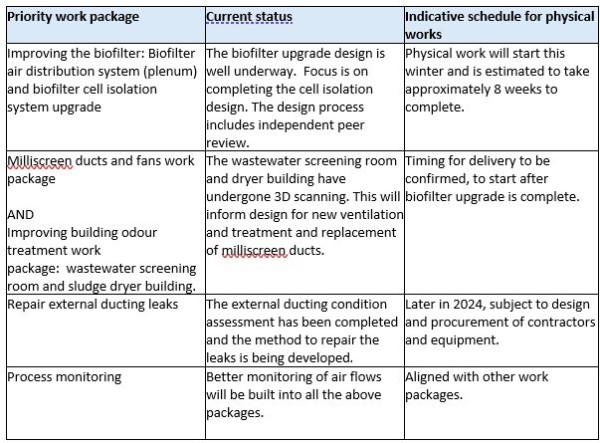
The second phase includes two work packages; sludge dryer air treatment and further external ducting. Both will require an assessment of the effectiveness of the first phase in reducing odour issues. The sludge dryer air treatment also needs to be considered alongside plans to replace the sludge dryer.
Plant maintenance update
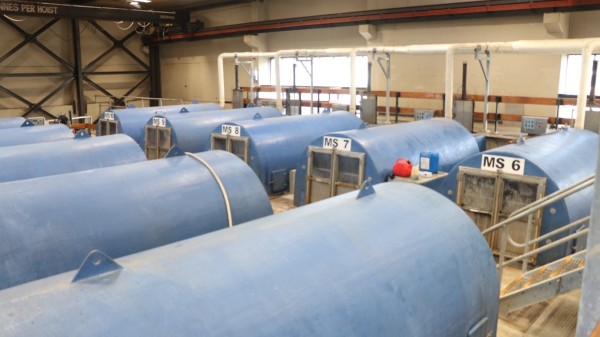
Milliscreening room
The odour ducts in the milliscreen area have been cleaned with high pressure water. This will enable more air to be drawn from the screen hoods to the biofilter for treatment, rather than escaping untreated, and we would expect this to contribute to reducing odour from the plant.
The image above shows the wastewater screening room. There are 10 inlet screens that remove large solids from wastewater as it enters the plant. The screens themselves rotate inside the blue hoods, and the white pipes carry the odourous air from the hoods to be treated.
Maintenance is planned soon for one of the four primary sedimentation tanks (PST) which removes the settleable solids (such as sand and larger organic particles) from the wastewater. The tanks have a mechanical system that scrapes the solids out, but some components of this system are worn out and need replacing.
Because we will be opening the tank, there is a risk of odour. We will use an odour masking system to mitigate the effects and advise you of works in advance.
Once this is completed, we will move on to draining and maintaining one of the four aeration tanks, which facilitates the biological treatment process of wastewater. The date for this work to be confirmed.
Veolia has commissioned a report into the effectiveness of the biofilter media replacement in December. It concluded that while the media replacement recorded an improvement on the performance of the odour treatment, further works are required for restoring it to optimum working condition.
This assessment supports the decision already made that the air distribution system within each cell, will be upgraded as part of the phase 1 priority works. It also provides a baseline to assess the effectiveness of the plenum (biofilter) upgrade work.
Plant performance update
Unfortunately, the plant is still not compliant with one of three standards for the treated wastewater pumped out to Cook Strait, as reported in the March performance dashboard available on the website.
Since last September, effluent has exceeded the set level for bacteria, of 5000 cfu(colony forming units) per 100 millilitres at least 80% of the time.
The level of risk to public health is low, because this treated wastewater is pumped into the sea near Pencarrow Head/ Te Raeakiaki where it is quickly diluted, however, we are are taking steps to address this.
This includes making improvements to the biological process and the ultra-violet (UV) disinfection system (which destroys bacteria). Monthly shoreline sampling is being undertaken and the bacteriological levels (enterococci) on the sites being monitored are below LAWA's alert trigger level of 140 cfu/100 mL.
The report records one discharge to Waiwhetū Stream in March and there was another in April. This was due to wet weather events increasing the amount of stormwater getting into the wastewater system. These discharges are permitted under the resource consent, but we are looking at long-term solutions to reduce or avoid this type of discharge.
In the interim, we are talking to Greater Wellington Regional Council (GWRC) about the signage around the stream.
There was also an unplanned discharge to the coastal marine area at Pencarrow in March, due to a power outage. We are providing more information to GWRC about this.
In March, we received 16 complaints about odour at the plant.
Community meeting
Councillor Brady Dyer has followed up on discussion about whether a new Council 'request for service' system would provide for odour complaints more efficiently. He advises that the Te Kahu Tāniko Customer-Centric Systems (CCX) project is well underway to address this.
This project will deliver a new customer portal and management system to handle issues more effectively and keep customers up to date on progress. Council staff are currently working with key contractors and stakeholders including Wellington Water to create an effective system. At this stage the project is expected to be complete in early 2025.
In the meantime, you can report odour issues by calling Hutt City Council or via Report A Problem on their website . All issues are reported to Greater Wellington Regional Council.
Next month
- Detailed design of the priority work packages will continue
- A report on the summer odour scouting programme
- Notifications of odour issues and wastewater overflows
- Proposed plant tour update
Get in touch
To register interest in a plant tour, email community@wellingtonwater.co.nz.
Join the mailing list for plant notifications and this monthly update, please email customer.notifications@wellingtonwater.co.nz.
If you have any questions regarding this newsletter, email community@wellingtonwater.co.nz.
For complaints relating to specific incidents or properties, email customer@wellingtonwater.co.nz.
Thank you for taking the time to read this information.
Linda Fairbrother Project Lead, Major Projects
Blair Johnson Head of Wastewater Contracts
Seaview Wastewater Treatment Plant Newsletter - March 2024
Kia ora koutou
This is the first of what will become regular monthly updates about Wellington Water’s operation of the Seaview Wastewater Treatment Plant and the programme of upgrade work.
You are receiving this email because you have expressed an interest in the plant. Please feel free to share this with others who may be interested. People can go on the mailing list by emailing customer.notifications@wellingtonwater.co.nz
Because this is the first newsletter, we thought some background would be useful.
The big picture
The Hutt Valley wastewater network including the plant is aging and needs upgrading, to ensure we can continue to protect the health of people and the environment, while catering for population growth.
The plant cleans and disinfects wastewater from about 160,000 people each day. However much of its equipment and parts are nearing the end of their service life, which means its more prone to service interruptions and needs more maintenance.
The plant’s equipment has deteriorated more quickly than expected, and the volume of wastewater to be treated has increased.
There is a multi-million-dollar programme of work planned over the next six to 10 years to renew and upgrade equipment at the plant, subject to funding being confirmed. This includes ongoing work looking at how to reduce overflows into the Waiwhetū stream.
The first priority is reducing offensive and objectionable odours from the plant. Wellington Water understands the community’s frustration with ongoing odour issues and is committed to improving odour control.
Odour control
Hutt City Council has committed $13 million to enable Wellington Water to get underway with work needed to improve odour control at the plant.
We appreciate the time of those who came to a community meeting on Thursday 21 March to discuss our plans to improve odour control, and the overall performance of the plant.
Those at the meeting raised some good questions and we are gathering information to answer those. There are some questions and answers on the project page on the Wellington Water website and more information will be added.
In brief, as set out in the presentation slides we outlined that the odour is coming from three main sources at the plant:
- Biofilter - the biofilter media (the biological material that filters air) was replaced in December, but it takes time for the biological process to get established. We also know the air distribution system (plenum) beneath the media needs renewal.
- Milliscreening process - odours are escaping because ducting taking air directly from the milliscreening equipment needs repairing and replacing, and because other air in the wider building is not captured by the odour control system.
- Sludge dryer building - this part of the process emits a different type of odour, and we are looking at solutions here.
A project team is working on solutions across these areas including:
- Upgrading the air distribution system in the biofilter
- Replace ducting and fans where required including from the milliscreening building
- Putting additional odour treatment into the milliscreening building and potentially the dryer building, noting the sludge dryer is due for replacement in coming years.
We’ll be keeping you updated through this newsletter and posting more details including timeframes on the website page as they are confirmed.
Current plant performance
We are unfortunately not fully meeting the standards set in the resource consents governing the operation of the plant. Greater Wellington Regional Council’s annual compliance report was discussed at last week’s meeting and is available here.
We are taking steps to address the issues, including operational improvements, ongoing maintenance and the upgrade programme referred to above.
Our most recent monthly dashboard report on the plant shows that we are still not compliant with one of three effluent quality standards in the resource consent; that is, the plant is non-compliant.
We are also not meeting consent requirements that there will be no offensive or objectionable odour outside the plant’s boundary. We recorded 41 odour complaints in February (additional to those received before February).
While there were no wet weather overflows into the Waiwhetū Stream in February, the GWRC annual compliance report noted that there were 26 discharges in the 2022-23 year. These are discharges of fully treated wastewater, acknowledging that at times the treatment process has not been meeting standards. Interested parties are notified when these discharges happen and there is some signage near the outfall. The signage will be reviewed following discussion at Thursday’s meeting. Wellington Water recommends all recreational water users follow the advice of Land, Air, Water Aotearoa (LAWA) to avoid swimming for at least 2 - 3 days after heavy or prolonged rain.
Effluent bacteria levels
Under the consent, the effluent (the treated wastewater pumped out to Cook Strait) should be within set levels of organic material (cBOD or readily biodegradable organic carbon), suspended solids and bacteria (faecal coliforms).
Since September, the effluent has exceeded the set level for bacteria, of 5000 cfu (colony forming units) per 100 millilitres at least 80% of the time. This is not acceptable, because of the potential risk to public health and the environment. It’s important to note the level of risk to public health is low because this treated wastewater is pumped into the sea near Pencarrow Head/ Te Raeakiaki where it is quickly diluted.
The outfall is well away from recreational areas and well sign posted. However, we aim to meet all standards, and we are taking steps to return the plant to compliance as soon as possible. This includes making improvements to the biological process and the ultra-violet (UV) disinfection system (which destroys bacteria).
_________________________________________
Next month
>The odour control project plan and timetable will be finalised
>Preparation for the biofilter air distribution system replacement will progress, including finalising the design, procuring contractors and equipment.
>Condition assessments of the ducting and fans and other elements will continue, with any ‘quick fixes’ identified to be addressed as soon as possible.
>The odour scouting programme will continue. This involves independent ‘noses’ visiting the area at a range of times and reporting odour levels. This is providing useful data to assist with our planning, alongside the valuable information from residents’ complaints.
>Notifications of odour issues and overflows will continue to be sent to you as they occur.
Get in touch
- Join the mailing list for plant notifications and this monthly update, or if you want to be removed from the mailing list, please email customer.notifications@wellingtonwater.co.nz
- For any questions relating to this newsletter, email community@wellingtonwater.co.nz.
- Any complaints relating to specific incidents or properties should go to customer@wellingtonwater.co.nz
- Thank you for taking the time to read this information.
Linda Fairbrother Blair Johnson
Project Lead, Major Projects Head of Wastewater Contracts
All Updates
We had 20 people attend the recent public tour of the Seaview Wastewater Treatment Plant on Saturday, June 22.
Two groups were guided through the plant following a welcome and health and safety briefing. Wellington Water’s Chief Advisor Wastewater Steve Hutchison provided a history of the plant, its construction and networks connections.
The plant operator Veolia, facilitated the walk around the plant explaining the different aspects of treatment and treatment processes. The tours ended with a Q & A session.
Invitation to Seaview Wastewater Treatment Plant Tour
Wellington Water invites you to tour the Seaview Wastewater Treatment Plant to see first-hand how the plant works and where upgrade work will be taking place.
- Saturday 22 June
- 1.30 pm to approx. 3.30 pm
- Seaview plant main entrance, Waterman Street, Seaview
- You must book in advance as numbers are limited
Please note that the tour involves walking and climbing a number of stairs so if you have mobility issues it may not be suitable for you. The tour is also not suitable for children under the age of 12.
For health and safety reasons, people must wear long pants, long-sleeved tops and closed shoes. We will provide safety equipment in the form of hard hats, hi-vis vests, safety glasses and disposable gloves, which must be worn.
Most of the tour route is outside, so jackets or rain gear may be required if it’s showery. If the weather forecast is bad, the tour will be postponed to Saturday 6 July. Numbers are limited so if there is a lot of interest we will add another date.
RSVP
Please book your place on the tour by emailing community@wellingtonwater.co.nz with your name, number of people attending, and your contact number in case of postponement. Please RSVP before Friday 14 June.
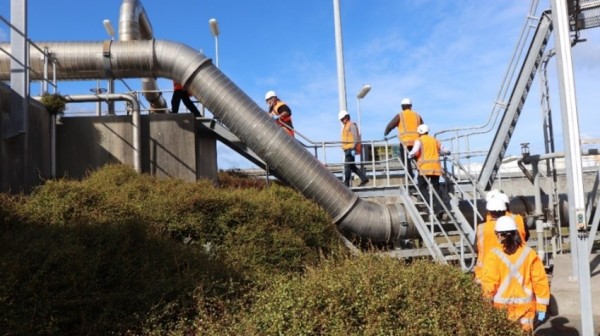
A community meeting on Thursday, 21 March discussed plant performance and Wellington Water's plans for upgrades to improve odour control.
Here is the presentation from the meeting - Seaview CLG March 21 2024
Here is the Greater Wellington Regional Council report discussed at the meeting
There were some requests for information at the meeting and these will be responded to shortly.
The works were initially expected to be completed by late January but the project team managed to reinstate the biofilter media prior to the Christmas break.
All the six cells of biofilter media are replaced and now commissioned.
Please note, While the biofilter media has been replaced, it will take a short period of time to bed in and become fully functional and 100 percent effective.
These works are a small first step to improve odour management, Hutt City Council has also included $13 million of proposed upgrades and improvements in the draft Long Term Plant.
This investment will support the long-term solution to odour management at the treatment plant.
We’ve made great progress with the biofilter media replacement at the Seaview plant.
These important works to improve odour management at the plant are ahead of schedule and we’re on track to complete the works by January 25.
From tomorrow, December 22, works will stop for the holidays and resume on January 10, 2024.
We acknowledge the patience of the local community and businesses, we look forward to completing the works for better odour management at the plant.
The team have made excellent progress after managing to replace the biofilter media in both cells 3 and 4.
This means 4 of the 6 cells of the biofilter media are replaced and commissioned.
The team have now moved to cell 5 to begin the process of excavation and inspection, before installing the new media.
Further updates will be provided as the project progresses.
Biofilter media - cells 2 &3 completed
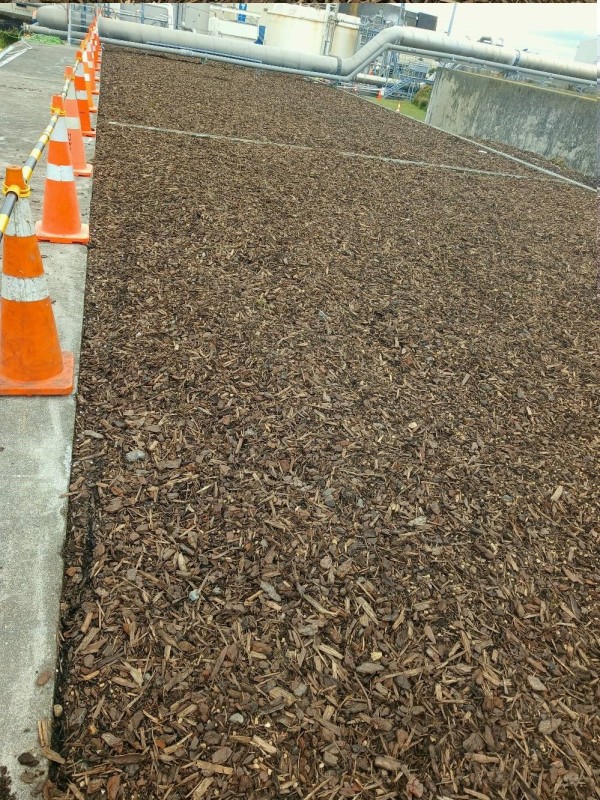
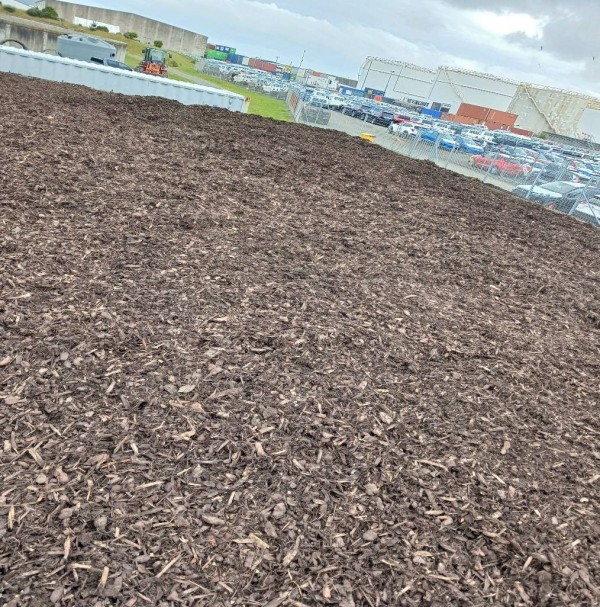
Biofilter media - cell 4 completed
Thank you to everyone who turned up at the Seaview community meeting on Wednesday night, your attendance and views were much appreciated.
We are committed to resolving the odour issue and will be working with Hutt City Council to get the necessary upgrades prioritised.
We know you want us to keep investing in the local wastewater system. Hutt City Council will be considering odour control upgrades as part of their long-term plan meeting next Tuesday.
Hutt City Council has proposed $13 million dollars to be spent over the next 3 years on the odour control upgrade work, along with other significant upgrades for the Seaview Wastewater Treatment Plant.
The team have successfully commissioned Cells 1 and 2 today. This means that both Cells are now operational and treating the odorous gases as designed (Image 1).
The team have moved the digger into Cell 3 and commenced excavation of the old media this afternoon (Image 2). Next week Cell 3 will be excavated and inspections will be performed before installing the new media.
Further updates will be provided as the project progresses.
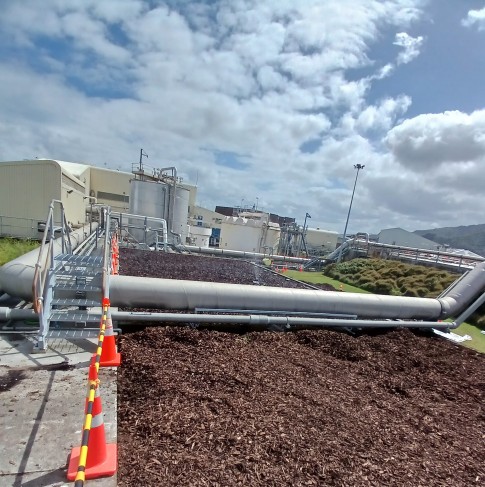
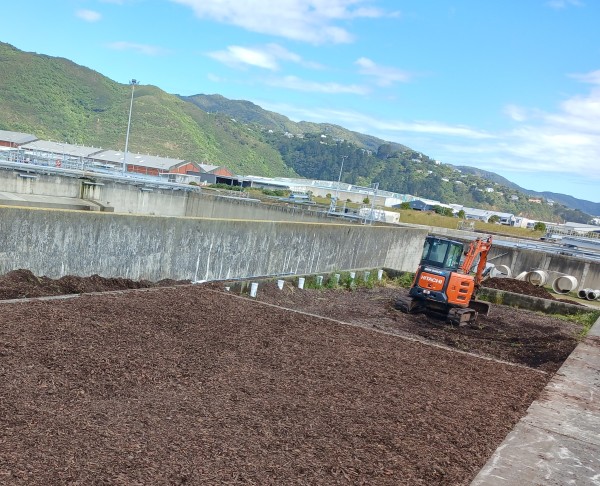
Image 1 - Cells 1 and 2 complete Image 2 – Cell 2 complete and digger in Cell 3
At the community meeting, Council and Wellington Water acknowledged that it's been unpleasant, inconvenient, and distressful for many who live in the vicinity, and discussed plans to address the odour issue at the Seaview wastewater treatment plant.
Te Rūnanganui o Te Āti Awa ki te Upoko o Te Ika a Māui, Waiwhetu marae and Wellington Tenths Trust/Palmerston North Māori Reserve Trust were in attendance as were many residents. The Hutt Park Holiday Village (Top 10) also attended. Deputy Mayor Lewis, Councillors Edwards, Brown, Dyer and Mike Fisher Petone Community Board Chair also attended along with staff from HCC, WW and GWRC. Seaview Marina and other businesses were also in attendance.
The presentation (815KB PDF)from Wellington Water explained the investigation undertaken to date and its outcome that biofilter media had reached the end of its lifespan and requires replacing. It was explained that an attempt to isolate and contain the first section of the biofilter as it was removed had not worked as hoped and resulted in the recent offensive odour.
Assurances were given by Council that we would do all we can to address the odour issue in the short and medium term.
Council is considering the draft Long-Term Plan, which now has a significant investment of $13 million, to significantly improve the situation with replacement of aged equipment at the plant. This investment has been brought forward to the next three years.
Mana Whenua present requested a separate briefing and for improved communications with them. Residents and businesses expressed frustration with the time it is taking to address the issue and, in the meantime, having to live with the offensive smell.
Hutt Park Holiday Village was critical the work is being undertaken during their busiest period, reporting a significant number of negative online reviews and direct complaints from customers about the smell.
Wellington Water expects this work will be completed by 25 January by which time the odour is expected to have significantly abated.
Councillors recommended that residents continue to log complaints via customer@wellingtonwater.co.nz when they notice the smell and encouraged them to make submissions to the Long-Term Plan process currently before Council. An online survey to gather feedback will appear on Hutt City Council's Annual Plans and Long Term Plans page on 2 April 2024 and remain open throughout April.
Works to replace the biofilter media are progressing well with the contractor successfully installing the new media into Cell 1 last week. (Image 1)
The digger has now been moved to Cell 2 (Image 2) and will begin removing the old media which will then be transported to landfill for disposal.
The replacement media for Cell 2 will be delivered this week and the team are optimistic of installing this ahead of schedule to fully commission cells 1 & 2 next week.
Further updates will be provided as the project progresses.
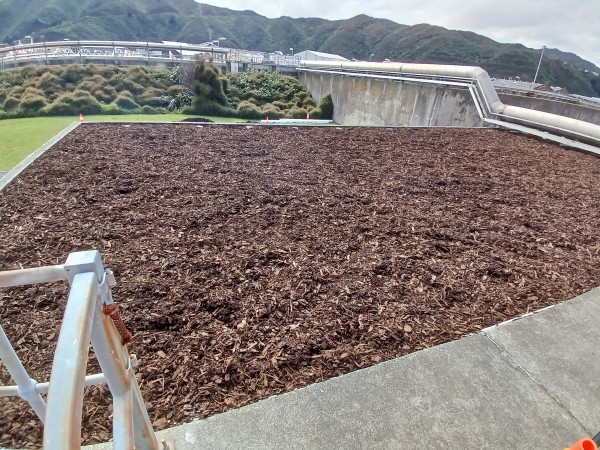
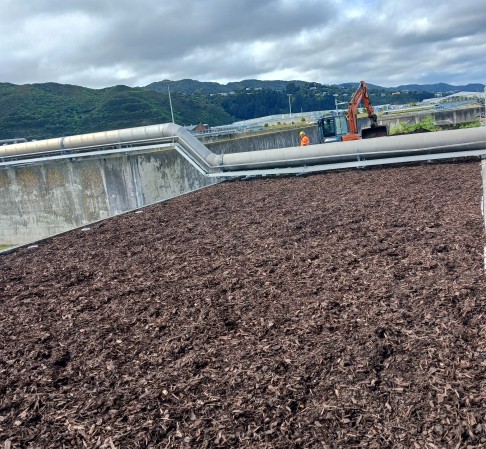
Image 1 - New media installed into Cell 1. Image 2 - Digger operating in Cell 2.

